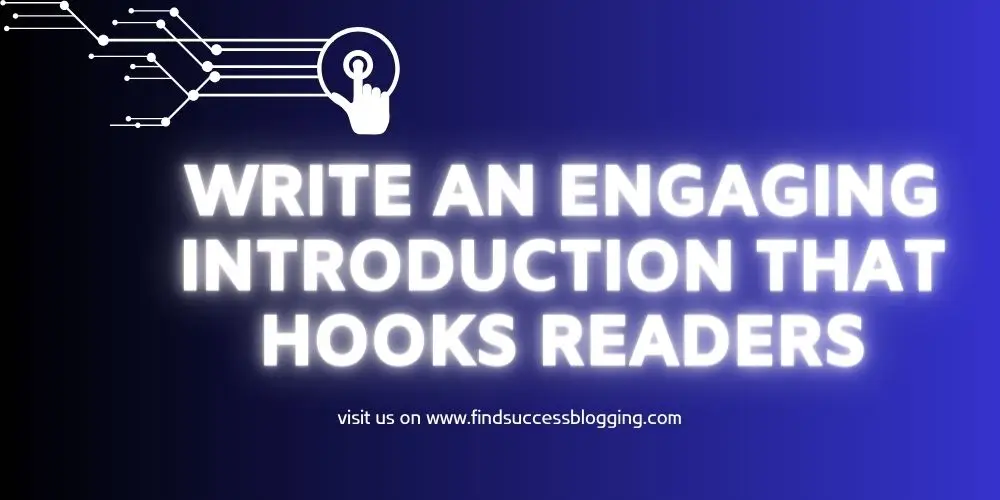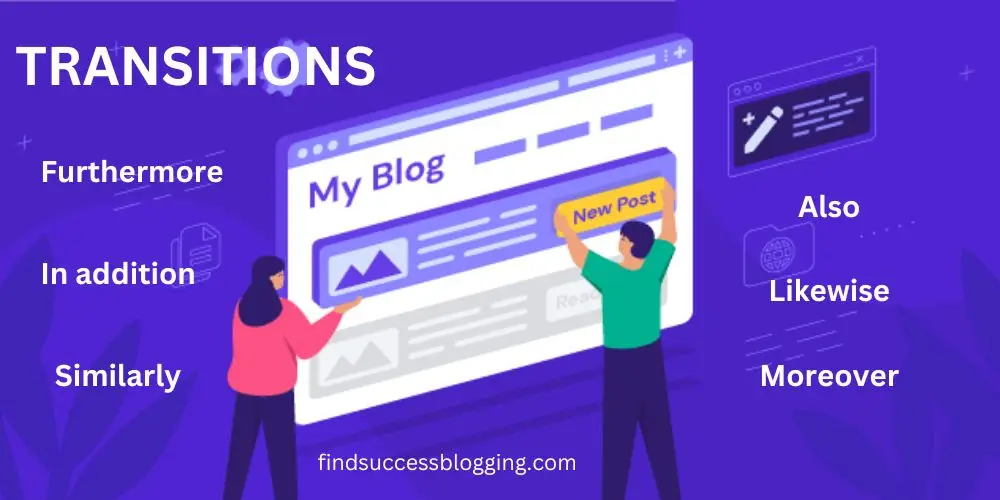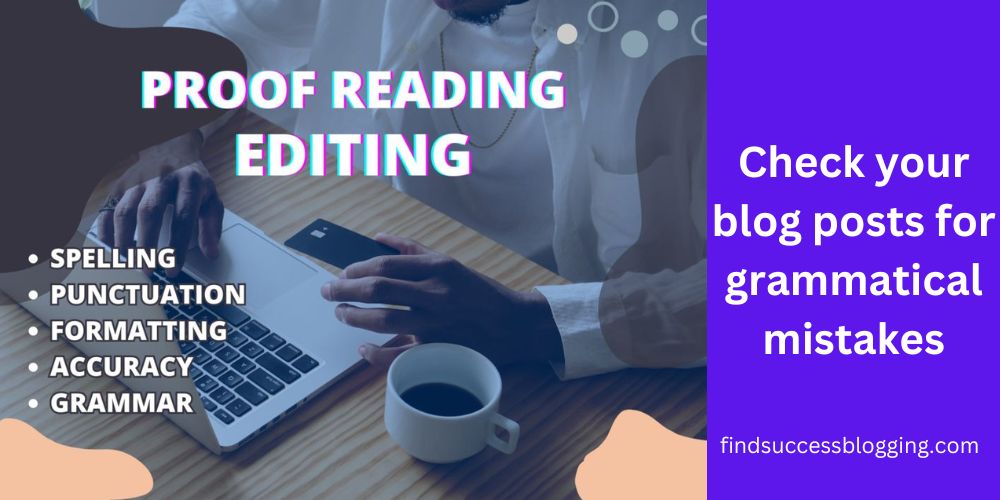Are you looking to learn how to write a blog post that ranks high on search engines? Do you want to learn how to write an SEO-optimized WordPress blog post that is SEO-optimized for more traffic to your website? If so, you’re in the right place.
But before I explain what writing blog posts involves, I won’t cover any aspects of generating articles using AI tools. My purpose is to explain how to write content that ranks better on search engines.
Also, you may use AI tools to get ideas and topics, but don’t rely on them so much because they are sometimes inaccurate and need fact-checking.
Besides, I’ll write another article on how to write an effective post using AI tools. So, the essence of this article is to inform you how to format an article for search engines.
Well, writing a blog post is a crucial aspect of content marketing. It’s an effective way to share your ideas and expertise with your audience while driving traffic to your website.
According to a Content Marketing Institute report, 71% of marketers stated content marketing was crucial for the success of their organizations in the previous year.
In 2023, site owners produced over 600 million blogs out of 1.9 billion websites worldwide. Also, WordPress bloggers alone publish over 2.3 million posts daily, accounting for over 2.5 billion annually.
So, with numerous online content, creating blog posts that stand out can be challenging.
Table of Contents
ToggleHow to Write a Blog Post for Your Website
In this article, we’ll show you how to write a blog post that is SEO-optimized, engaging, and informative. We’ll cover everything from developing post ideas for your blog and structuring it for maximum impact.
I usually follow this formula when writing blog posts to engage more readers and optimize the content for search engines. Let’s get started.
1. Pick a topic that resonates with your readers

Topic selection is the first step as you learn how to write a blog post. After all, readers desire to read relevant and exciting topics.
So, one way to do this is by researching your target audience and knowing their interests. Use tools like Google Trends or keyword research tools to get insights into your audience’s interests.
These tools help you know the most popular topics online and what currently interests readers. Once you know your audience’s interests, brainstorm topics that resonate with them.
Make sure your topic is specific and focused. Always create content that is more targeted and relevant to your audience.
In addition, when choosing a topic, it’s also important to consider your expertise and interests.
Writing about something you’re passionate about will make the process more enjoyable and create better content. However, ensure you’re not writing just for yourself; always keep your audience in mind.
Check this post for additional tips on writing a perfect blog post.
| When picking a topic that resonates with your audience, you’ll create engaging, informative, and valuable content. These topics usually impress readers for more clicks, conversions, and blog post visibility. |
2. Research your topic thoroughly as you write a blog post

After choosing a topic for your blog post, the next step in learning how to write a blog post is performing thorough research. Researching your topic helps create informative, accurate, and valuable content for your readers.
There are several tools you can use with your research. Google Bard and Bing Chat are excellent places to start. Use these tools to search for articles, blog posts, and other resources related to your topic.
Another popular tool is BuzzSumo. This tool allows you to see the most popular or shared content on social media related to your topic. As a result, you will get ideas for your content and see what types of content resonate with your audience.
Other popular platforms include Quora and Reddit, which help you know the most asked questions about your topic. Use these platforms to quickly learn how to write a blog post that answers readers’ questions and provides value to them.
Besides, keeping track of your sources is crucial when researching your topic. Ensure to use reputable sources and cite them properly in your blog post. As a result, you will create accurate and trustworthy content.
| Performing thorough research with relevant tools and platforms creates informative, accurate, and valuable content for your readers. |
3. Create a catchy headline that grabs readers’ attention

Your headline is the first thing your readers see, so it’s crucial to make it catchy and attention-grabbing. A good headline will entice readers to click on your blog post and read more.
There are several tools you can use to help you create a catchy headline. One tool is CoSchedule’s Headline Analyzer. This tool analyzes your headline and gives it a score based on factors like word balance, length, and sentiment. It also provides suggestions to improve your headline.
Another popular tool is Portent’s Content Idea Generator. This tool generates ideas for headlines based on your topic. You can enter your subject into the tool, allowing it to create several headline ideas for you.
Also, when creating your headline, make sure it’s specific and focused. Use numbers or statistics if possible, as these perform well. For instance, you can use the top ten ideas for viral blog posts or 11 best ideas for viral blog posts.
In addition, consider powerful words like “ultimate,” “essential,” or “proven” to make your headline more compelling.
| When you create a catchy headline that grabs readers’ attention, you’ll entice readers to click on your blog post for more information. |
4. Write an engaging introduction that hooks readers

Your introduction is the first thing your audience will read after your headline. So, one way to learn how to write a blog post is to use engaging and exciting content for your readers.
Check this post to know the top 10 reasons readers give up on your site.
Here are some tips on how to write engaging introductions.
Use storytelling
One way to make your introduction more engaging is by using storytelling. Tell a story that relates to your topic and draws your readers. Use real-life experiences and examples to connect emotionally with your readers and make them more interested in your content.
Ask a question as you write a blog post
Another way to make your introduction more engaging is by asking relevant questions. Introduce a question that relates to your topic and gets your readers thinking.
As a result, you create curiosity and make your readers want to keep reading for more answers.
Use statistics as you write a blog post
Using statistics in your introduction is also effective when learning how to write a blog post. Therefore, use statistics relating to your topic to emphasize the topic. As a result, you create credibility and make your readers more interested in your content.
| With this tip, you can write an engaging introduction that hooks your readers and makes them want to keep reading your posts. |
5. Structure your body content with H2 and H3 headers

Structuring your body content is vital to make it easy to read and understand. One way to do this is using H2 and H3 headers to break up your content into sections.
Besides, statistics show readers peruse posts to see the most relevant points. Most readers never have time to read the whole content, especially if they are researching.
As you learn how to write a blog post, here are some tips to structure your body content:
Use bullet points and numbered lists
These lists make your blog posts more scannable and easier to read. Also, it creates a better user experience for your readers.
Bold some valuable text as an emphasis as you write a blog post
Bolding crucial sentences can emphasize and make your content more engaging. However, avoid overwhelming readers with too many bold sentences in a blog post.
Include charts and tables for comparisons
One way of structuring content as you learn how to write a blog post is using tables and charts. These come in handy when comparing data or statistics. As a result, they create visual interest and make your content more engaging.
| Structuring your body content with H2 and H3 headers and using these other tips creates engaging and informative content. |
6. Use active voice instead of passive voice as you write a blog post
Using active voice instead of passive voice makes your content engaging and easy to read. Active voice is when the subject performs an action, while passive voice is when the subject receives the action.
Here’s an example of passive voice: “The blog post was written by me.”
Here’s an example of an active voice: “I wrote the blog post.”
As you can see, the active voice is more direct and engaging. It also makes it clear who performs the action.
Advantages of active voice
- It is easy to understand
The active voice is easier to understand because it is more straightforward. For example, the active voice sentence “I wrote a blog post” is easier to understand than the passive voice sentence “A blog post was written by me.”
- It is more concise
The active voice can often be more concise than the passive voice, making your writing more readable and easier to scan. Also, passive voice can be wordy and confusing, causing your readers to lose interest.
- It gives the writer more control
The active voice gives the writer more control over sentence structure, which creates a particular effect or tone. For example, the active voice sentence “The CEO fired the employee” can show a sense of authority or power.
| Active voice is better than passive voice because it creates engaging and concise content. Also, it is easy to understand and gives the writer more control. |
7. Use transitions to keep the paragraphs conversational

Another crucial tip as you learn how to write a blog post with WordPress is using transitions. They are words or phrases that connect one idea to another. Also, transitions create well-flowing content that is easy to read.
Check this post for the top 20 reasons to use WordPress on your business website
Here are some examples of transitions:
- Furthermore
- In addition
- Similarly
- Also
- Likewise
- Moreover
Using transitions generates conversational and engaging content that has a good flow. Also, it will help you create a better user experience for your readers.
Besides, it’s important to use transition words sparingly and appropriately. Overusing transitions can make your content sound dull. So, ensure their use is relevant and adds value to your content.
| Transitions keep your paragraphs conversational with a good flow. Also, they create content that is easy to read and engaging. |
8. Include images and videos to break up the text

Use videos and images in a blog post to reduce boredom when reading long texts. Below are the benefits.
They break up the text and make it more visually appealing
A wall of text can be daunting and off-putting to readers. However, images and videos break up the text and make it more visually appealing. As a result, your blog post becomes more inviting to read.
Help readers understand your content better
Images and videos illustrate crucial points and make your content easier to understand. For example, if you are writing a blog post about how to cook a specific dish, you could include an image of the ready-cooked dish.
Check this post to understand 15 Common Blogging Mistakes to Avoid for a Successful Blog
As a result, readers will visualize the dish and understand the steps involved in cooking it.
Increase engagement
Images and videos increase engagement with your blog post. When readers see an image or video, they will probably click on it and read the rest of your post. So, they help to improve your click-through rate (CTR) and overall engagement.
Improve SEO
Images and videos improve your SEO by making your blog post friendly to the search engines. So they can attract more visitors to your blog and improve your search engine ranking.
Continually optimize your images for SEO by adding alt text and captions related to your keywords.
Here are some tips for using videos and images as you learn how to write a blog post.
- Use high-quality images and videos.
- Ensure the images and videos relate to your content.
- Optimize your images for SEO.
- Illustrate your points with images and videos and make your content easier to understand.
- Use images and videos to increase engagement with your blog post.
| Images and videos create blog posts that help readers understand the text better and break up lengthy texts. Also, they are visually appealing, increase engagement, attract more clicks, improve SEO, and are search engine friendly. |
9. Use natural language and avoid jargon or technical terms
Natural language makes your content more accessible and easier to read. Avoid vocabulary or technical terms that your readers may not understand. Instead, write with simple and easy-to-read sentences.
Natural language has many benefits to jargon as you learn how to write a blog post. Here are a few:
Your writing is more accessible to a broader audience
With natural language, you speak to your readers better. Clear or understandable language is crucial when writing about a technical topic. It ensures your readers can follow your argument and understand your points.
It makes your writing more engaging
Natural language is more conversational and engaging than jargon or technical terms. With natural language, your readers can become more attentive to your words.
It avoids misunderstandings
Jargon and technical terms can be confusing. So, natural language makes your blog posts easy to understand.
Improves SEO-friendly posts
Search engines like Google favor natural language content over jargon and technical content. Another reason is content written in natural language is more relevant to people’s search.
Here are some tips for using natural language and avoiding jargon or technical terms in your blog posts:
- Choose your words carefully
- Use examples to illustrate your points
- Explain technical terms for readers to understand
- Proofread your work for jargon and technical words. Use Grammarly or ProWritingAid to help you monitor these words
|
Using natural language and avoiding jargon or technical terms makes blog posts more accessible to a broader audience. Also, they are more engaging, less likely to cause misunderstandings and make your writing more SEO-friendly. To use natural language effectively, use examples to illustrate your points and explain technical terms when necessary. Also, proofread your work carefully before publishing. |
10. Proofread and edit your work for grammatical mistakes

Proofreading and editing your work is vital to ensure it is free of grammatical errors and typos. Grammatical errors distract your readers and make the content look unprofessional.
Also, proofread your post for fluff and overused words, as they don’t add value to your writing.
Check out 15 common blogging mistakes to avoid for successful blogging
Here are some proofreading tips as you learn how to write a blog post.
- Take a break
Taking a break between writing and proofreading can help you see your work with fresh eyes. As a result, you can detect errors you might have missed.
- Read your content aloud
Reading your content aloud identifies awkward sentences or phrases. As a result, you will understand the rhythm and flow of your writing. Also, you will readily detect mistakes you might not have noticed with silent reading.
- Use online tools
Online tools like Grammarly or Hemingway can detect errors and improve your writing. Also, these tools can identify grammatical errors, typos, and other issues related to your writing.
| Proofreading and editing your work for grammatical mistakes create professional and engaging content. Two proofreading tips include reading content aloud and using online tools for editing and checking grammar. |
11. Use human emotion to engage the reader
Human emotion involves writing posts that connect and resonate with your readers’ feelings. Below are some reasons you should consider how to write a blog post with human emotion.
- Emotions make people connect with your content
Readers who resonate with your blog posts are more likely to connect with your posts. For example, if you are writing a blog post about the importance of self-care, you could share a personal story about self-care challenges in your life. As a result, readers can connect with your content to care for themselves.
- Emotions make your content more memorable
People are more likely to remember content that evokes emotions. For example, if you read a blog post that makes you laugh, you will probably remember it than a blog post that is just informative.
- Emotions make your content more persuasive
Persuasive content is likely to make people have positive emotions. For example, if you are writing a blog post about why people should buy your product, you could start by sharing a story about how your product has helped someone else.
This action creates positive emotions in your readers about your product while increasing conversions.
What about AI-generated content?
While AI-generated content can be helpful for research, avoid using entire articles from AI tools.
Although Google allows bloggers to use AI-generated posts, it may release updates about such content. So, staying informed and adjusting your AI-generated content is essential.
Besides, AI-generated content lacks human emotion because it cannot understand or experience human emotions. As a result, AI-generated content can often feel cold, impersonal, and unconvincing.
Here are additional reasons to avoid AI-generated content:
- The content is not as engaging as human-written content
- AI-generated content is not as persuasive as human content
- The content cannot evoke emotions
- AI-generated content can be inaccurate or misleading. So, you’ll need to fact-check or verify its content
- Content can sometimes have lots of fluff and filler words
| Using human emotion when writing blog posts is crucial in engaging and persuading readers. AI-generated content lacks human emotion and can be inaccurate or misleading. So, only use AI tools to research content for your blog posts. |
12. Optimize your blog post for SEO.

This step is crucial because it ranks blog posts higher in search engine results pages (SERPs) while attracting traffic to your website. Here are some tips to optimize your blog posts for SEO when learning how to write a blog post.
Do keyword research
This process involves finding the right keywords to target in your blog post. Use tools like Google Keyword Planner or Ahrefs to find keywords relevant to your topic with high search volume and low competition.
Match your content with the search intent
Search intent refers to the reason behind a user’s search query. Ensure your blog post matches the search intent of your target audience.
For example, if someone is searching for “how to optimize blog posts for SEO,” they’re probably looking for tips on how to do that.
Optimize images and videos
This step improves the loading speed of your blog post, which is an important ranking factor for Google.
Optimize your title tags and meta descriptions
Your title tag and meta description appear in the SERPs when a visitor searches for a keyword related to your blog post. Ensure the title is exciting and optimized with target keywords to attract more clicks to your website.
Optimize your URL for your keyword
When you optimize your blog post with your focus keyword, Google can easily understand it.
Use internal links throughout your blog
Linking internally throughout your blog improves the readers’ experience by making it easier for them to find related content on your website.
Conclusion on how to write a blog post
Learning how to write a blog post can be a daunting task. However, the tips in this blog post help you write informative, engaging, and SEO-friendly blog posts.
Here are a few key takeaways:
- Choose a topic that resonates with your audience. What are your readers interested in? What do they want to learn more about?
- Research your topic thoroughly. Make sure you have a good understanding of your topic before you start writing.
- Write a catchy headline that grabs attention. Your headline is the first thing people see, so make sure it’s exciting and attention-grabbing.
- Write an engaging introduction that hooks your readers. Start with a strong hook that will make your readers want to keep reading.
- Structure your body content with headings and subheadings. Your blog post will be easier to read and scannable.
- Use active voice and natural language. Avoid using jargon or technical terms that your readers may misunderstand.
- Use images and videos to break up text and make your blog post visually appealing.
- Optimize your blog post for SEO. Your blog post will rank higher in search engine results pages (SERPs).
- Proofread your blog post carefully before publishing it. Make sure there are no errors in grammar or spelling.
- Use human emotion to engage the reader.
| Do you know other ways to write a blog post I might have missed? Kindly share them in the comment section below, or let us know your opinions about this post.
Don’t forget to subscribe to our newsletter for updates on our latest posts. Also, if you enjoyed reading this post, share this message with your friends on Facebook, Twitter, and other social media sites. Let’s find success in blogging together. |








